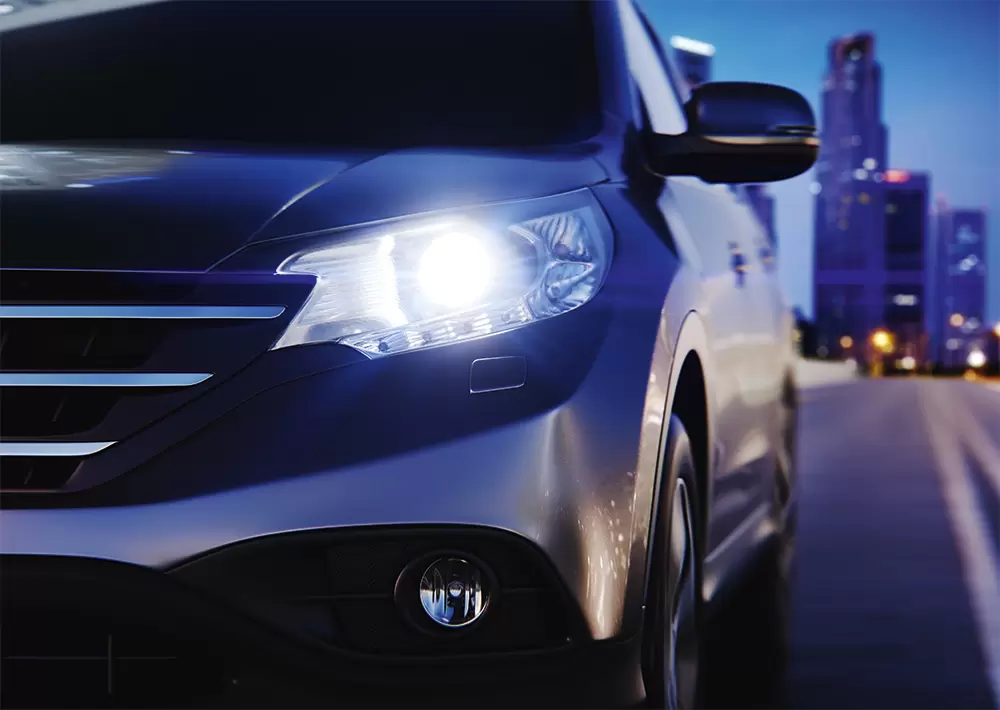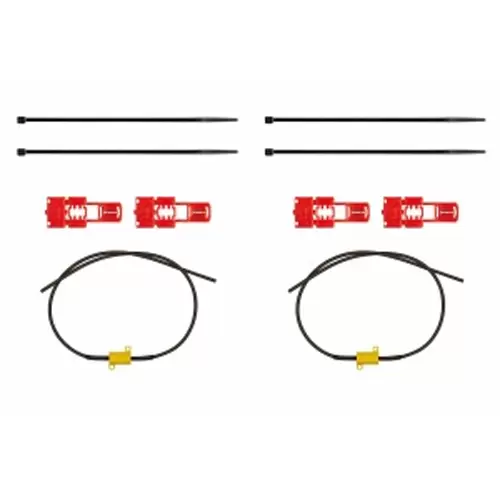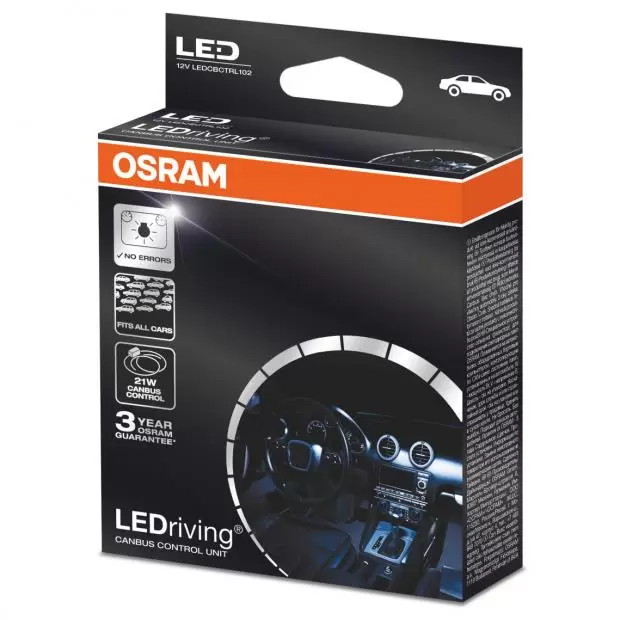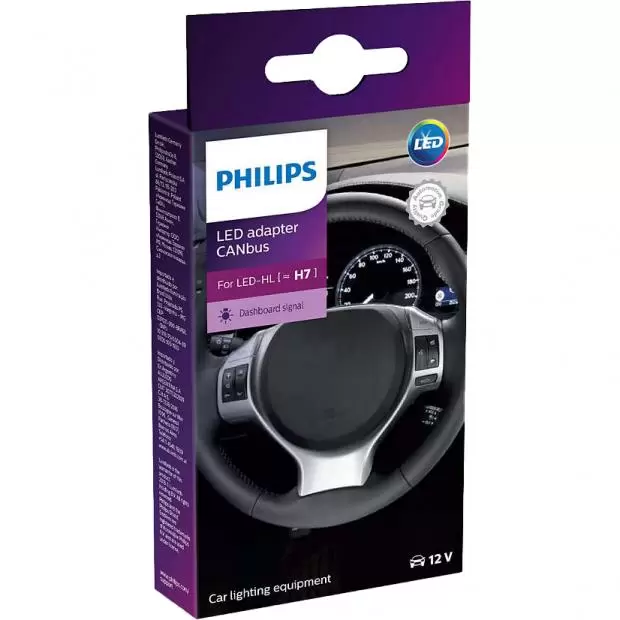
What does CANbus mean?
The most common problem encountered by drivers wanting to upgrade from a halogen to a more stylish and powerful LED bulb, isn't the lack of choice. With acclaimed ranges available from world-class companies such as Philips, OSRAM and GT, there's no shortage of excellent LED ranges to choose from. Arguably, the most common problem revolves around an element of a vehicle's wiring system - a CAN bus.
In order to understand precisely what a CANbus canceller is, we must first understand what a CANbus system is.
'CANbus' is an abbreviated form of 'CAN bus', which stands for Controller Area Network bus'. In the electrical sense, a 'bus' is a kind of connective hub that allowes for communication between two or more circuits or components. A CANbus is connected to - and so spots faults in - many parts of your vehicle. For instance, low tyre pressure may trigger an error message on the dashboard.
Why do LED bulbs sometimes need a CANbus adapter?
If your vehicle's lighting is not producing the wattage your vehicle expects, the canbus system will detect this, and interpret it as a fault - again triggering an  error message. Where this is normally useful, the canbus's scope for interpretation is limited. It judges the functionality of bulbs purely through their wattage, which is where the problem lies.
error message. Where this is normally useful, the canbus's scope for interpretation is limited. It judges the functionality of bulbs purely through their wattage, which is where the problem lies.
For example, where a standard halogen headlight bulb has a wattage of around 35W, an LED headlight bulb may operate anywhere from around 14W to 25W - a significantly lower figure than the CANbus expects. The CANbus doesn't know this, of course - it simply interprets a low-wattage LED bulb as a regular halogen with an insufficient wattage and triggers an error message. The same goes for smaller LED fittings.
Ironically, the bulb error message that many drivers think is an indication of a faulty LED bulb is actually due to the advanced, energy-efficient LED technology functioning as expected.
What does a CANbus resistor look like and where do I put it on my car?
Although different fittings and brands vary, a CANbus canceller generally comes in the form of a small cable and adapter. This small unit is installed in between your vehicle's wiring and the LED bulb. The CANbus control unit's position then allows it to intercept and increase the draw of electrical current, whilst still maintaining normal bulb function. As such, the CANbus system then perceives the current draw as being within the expected range, and so doesn't trigger any error messages.
In the case of smaller bulb fittings, the CANbus adapter will generally consist of a small unit connected to two wires, each having a clip. To install this on an already-fitted LED car bulb, you simply connect the wires individually to the two wires connecting the vehicle to the bulb. Clip the wires into place, and then fix the unit neatly using the cable ties provided.
It may sound unexpected, but installing CANbus cancellers for larger fittings such as headlight bulbs (H4, H7 etc) is actually less complicated. With smaller  fittings, you have to install the kit directly onto the wiring of the vehicle. However, with bigger fittings, it's simpler thanks to the 'plug socket' system. A CANbus adapter for a headlight generally consists of a unit with a cable at either end. One cable's end has an input/socket into which the LED bulb goes. The other cable ends with a plug, which goes straight into the headlamp's bulb socket. The unit is then fixed to the internal headlight unit with the clip ties provided.
fittings, you have to install the kit directly onto the wiring of the vehicle. However, with bigger fittings, it's simpler thanks to the 'plug socket' system. A CANbus adapter for a headlight generally consists of a unit with a cable at either end. One cable's end has an input/socket into which the LED bulb goes. The other cable ends with a plug, which goes straight into the headlamp's bulb socket. The unit is then fixed to the internal headlight unit with the clip ties provided.
Which CANbus control unit should I use?
Now that we understand what a CANbus canceller/resistor is, the question remains: which shall I use?
It usually depends on which bulb you're buying. If there's a bulb fitting on the Canbus unit, then choose the corresponding fitting for your vehicle. For example, if you've got a Philips H7 LED, we'd recommend that you purchase the Philips LED Headlight Canbus Adapter H7. Fittings such as PY21W, for example, would use a 21W CANbus adapter. Similarly, if you've got a W5W, or another fitting that's 5W, you'll need a 5W CANbus. If you have a bulb such as a W16W and can't find a unit to exactly match the wattage, choose one that's closest but round up. So, in the case of a W16W, you could use a 21W resistor.
Shop CANbus control units here.
Please note: LED bulbs used on the exterior of the vehicle do not have ECE approval, and as such their usage is currently not approved for use on public roads: their usage should be limited to ‘off-road’ applications.
Did you enjoy this article? Do you have any further information that we've missed? Please let us know via our Facebook page.
About the Author
 John Conboy is the founder of PowerBulbs.com, a UK based automotive lighting specialist, which ships bulbs worldwide. John has 20+ years experience in the industry and in that time has become an approved partner of Philips and OSRAM.
John Conboy is the founder of PowerBulbs.com, a UK based automotive lighting specialist, which ships bulbs worldwide. John has 20+ years experience in the industry and in that time has become an approved partner of Philips and OSRAM.















_120_41.png)









 Close
Close